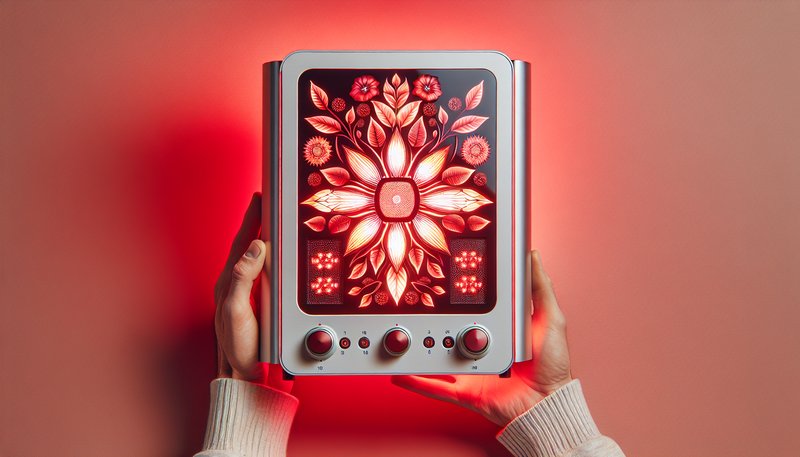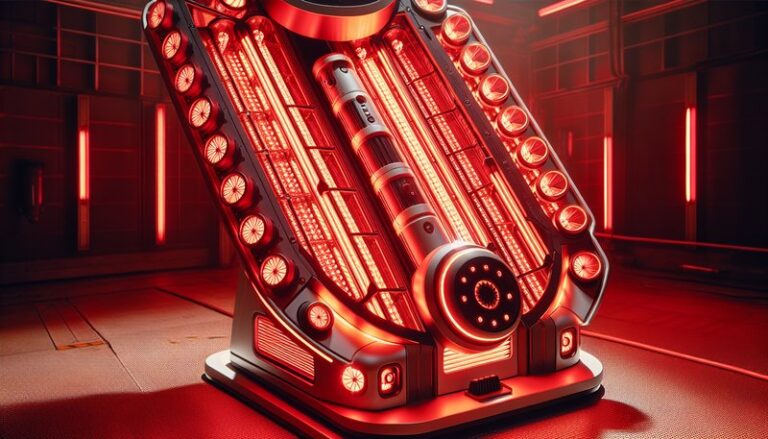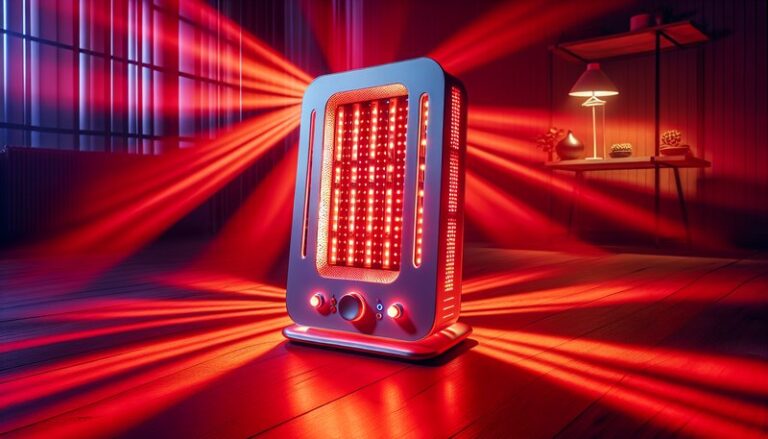Which Red Light Therapy Is Best?
Are you curious about the best red light therapy options available and how to choose the right one for your needs?
This article will explore the various types of red light therapy devices, their benefits, alternatives, and considerations to help you make an informed decision about red light therapy. By the end, you’ll have a clearer understanding of what to look for in the best red light therapy product for your specific needs.
Key Takeaways
- Different types of red light therapy devices cater to various needs, including skin health and muscle recovery.
- Red light therapy offers numerous potential benefits, such as pain relief and improved skin appearance.
- Consider factors like device specifications, treatment areas, and personal goals when choosing a red light therapy solution.
What is Red Light Therapy?
Red light therapy (RLT) is a non-invasive treatment that employs low-level wavelengths of red light to promote healing and rejuvenation within the body. This therapy is believed to work by penetrating the skin and stimulating cellular processes, which can enhance healing, reduce inflammation, and improve skin appearance.
Red light therapy is used in a variety of settings, including dermatology clinics, physical therapy, and even at-home devices. The technology is based on the principle that certain wavelengths of light can energize the cells, promoting recovery and health.
The most common wavelengths for red light therapy typically range from 600 to 650 nanometers (red) and 800 to 880 nanometers (near-infrared). Different devices may target specific areas or conditions, so understanding their features is crucial.
What are the Benefits of Red Light Therapy?
Red light therapy has gained popularity due to its array of potential benefits. Let’s explore some of these advantages in detail.
Skin Health Improvement
One of the most celebrated benefits of red light therapy is its impact on skin health. Studies indicate that RLT can improve collagen production, reduce wrinkles, and diminish the appearance of scars and blemishes.
Read our exploration of Can Red Light Therapy Treat Acne?
Enhanced Muscle Recovery
Athletes and fitness enthusiasts often turn to red light therapy to expedite muscle recovery. RLT has been shown to reduce inflammation and accelerate healing of injuries, especially after exercise, allowing for quicker return to physical activities.
Pain Relief
Red light therapy is increasingly being used for pain management. Research suggests that RLT can reduce pain in conditions such as arthritis, muscle soreness, and even joint injuries by promoting blood circulation and decreasing inflammation.
Other Benefits
Additional potential benefits of RLT include improved sleep quality, enhanced mood, and better wound healing. These benefits are contributing to the growing popularity of red light therapy in wellness practices.
Is it Possible to Use Red Light Therapy at Home?
Yes, many individuals choose to use red light therapy at home with portable devices that are both effective and convenient. Home devices range from handheld wands to full-body panels.
What are the Advantages of Using Red Light Therapy at Home?
Using red light therapy at home offers several advantages:
- Convenience: You can easily incorporate therapy into your daily routine without scheduling appointments.
- Cost-Effectiveness: Investing in a home device can save you money over time by reducing the need for professional treatments.
- Personalized Treatment: You can tailor your sessions according to your specific needs and schedule.
What are the Disadvantages of Using Red Light Therapy at Home?
While home use can be beneficial, there are some disadvantages to consider:
- Limited Power: Some at-home devices may not be as powerful or effective as professional equipment.
- Lack of Guidance: Without professional supervision, there might be uncertainty about optimal use and safety precautions.
- Initial Cost: High-quality home devices can require a significant upfront investment.
What are the Things to Consider Before Using Red Light Therapy at Home?
Before purchasing a red light therapy device for home use, consider the following key factors:
Device Specifications
Evaluate the specifications of the device, including the wavelength, size, and power output. Higher power and appropriate wavelengths are crucial for effective treatment.
Treatment Area
Think about the areas of your body you wish to target. Choose a device that suits the size of the treatment area for the best results.
Frequency of Use
Determine how often you plan to use the device. Consistent use is often necessary for achieving optimal results, so ensure that your schedule allows for regular treatments.
Safety Features
Look for safety features such as automatic shut-off timers and eye protection. These features enhance user safety during therapy sessions.
What are the Alternatives to Red Light Therapy?
If red light therapy does not seem suitable for your needs, there are several alternatives worth considering:
Cold Laser Therapy
Cold laser therapy uses low-intensity lasers to relieve pain and promote healing, similar to red light therapy but typically across different wavelengths.
Ultrasound Therapy
This technique uses sound waves to stimulate tissue repair and relief from pain. It is often used in physical therapy settings for injuries.
Heat Therapy
Applying heat, such as with heating pads or infrared saunas, can provide relief from muscle tension and improve blood flow, offering a simpler alternative for some users.
Massage Therapy
Hands-on methods, like massage therapy, can alleviate pain and tension in muscles, providing another avenue for recovery and relaxation.
Conclusion: Is it Recommended to Use Red Light Therapy?
Red light therapy presents many potential benefits, making it a popular choice for those looking to improve skin health, enhance athletic recovery, and manage pain. Using red light therapy can be convenient and effective, particularly with at-home devices that allow for personalized treatment.
However, it is essential to assess product specifications, treatment goals, and safety considerations carefully. For those who find red light therapy aligns with their needs, the journey toward healthier skin and improved well-being could be just a device away.
Frequently Asked Questions
What conditions can red light therapy help treat?
Red light therapy can assist in treating various conditions, including acne, arthritis pain, muscle soreness, and more. However, it’s essential to consult with a healthcare professional for personalized advice.
How often should I use red light therapy for optimal results?
Most recommendations suggest using red light therapy 3-5 times a week, but frequency may vary depending on the device and your specific goals.
Are there any side effects of red light therapy?
Red light therapy is generally considered safe, with few reported side effects. However, some users may experience mild skin redness or irritation. Always follow manufacturer guidelines and consult with a healthcare professional if you have concerns.
Can red light therapy be used in conjunction with other treatments?
Yes, red light therapy can often be combined with other therapies and skincare treatments. However, consult with a healthcare provider for the best approach based on your individual situation.
How do I choose the right red light therapy device?
When selecting a red light therapy device, consider factors like wavelength, power output, treatment area size, and device safety features. Researching reputable brands and reading reviews can also help guide your decision.
Dive into Red Light Therapy Frequency






